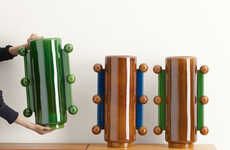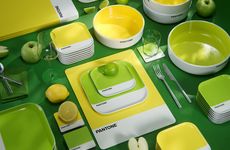
Tamara Efrat Turns Textiles Into Aged Ceramics with 3D Printing
Laura McQuarrie — February 26, 2022 — Art & Design
References: design-milk
Tel Aviv-based interdisciplinary artist and designer Tamara Efrat takes elements from textiles designed by Bauhaus women weavers and turns them into 3D-printed creations. This process involves creating a 3D relief and then a mold template so that the finished pieces can be rendered in porcelain.
This unique process fuses elements of traditional handicrafts with algorithmic technology and 3D printing to digitize the process. The Decorative Arts collection sets itself apart with dynamic textures and unconventional and intricate forms that could only be made possible with the help of additive manufacturing. The series of vessels share a common design language and all-white forms that serve to highlight the traditional textile work that inspired the project.
This unique process fuses elements of traditional handicrafts with algorithmic technology and 3D printing to digitize the process. The Decorative Arts collection sets itself apart with dynamic textures and unconventional and intricate forms that could only be made possible with the help of additive manufacturing. The series of vessels share a common design language and all-white forms that serve to highlight the traditional textile work that inspired the project.
Trend Themes
1. Textile-inspired 3D Printing - Exploration of using traditional textile designs as inspiration for 3D-printed creations to digitize handicraft processes.
2. Dynamic Textures in Additive Manufacturing - Innovative use of 3D printing to create intricate and unconventional forms in porcelain that were previously impossible to achieve through traditional ceramic mold techniques.
3. Blurring Boundaries Between Traditional and Digital Crafts - Combination of algorithmic technology and handicrafts in the creation of unique and innovative ceramics.
Industry Implications
1. Art and Design - Opportunity for interdisciplinary artists and designers to explore the fusion of traditional crafts and modern technology in their work.
2. Additive Manufacturing - Potential for 3D printing to expand the possibilities of ceramic production with new forms and textures that were not previously achievable through traditional mold-making techniques.
3. Textile and Fashion - Exchange of inspiration between textile and ceramic art, opening possibilities for designers in each industry to learn from one another and leverage new techniques in their work.
2.1
Score
Popularity
Activity
Freshness















